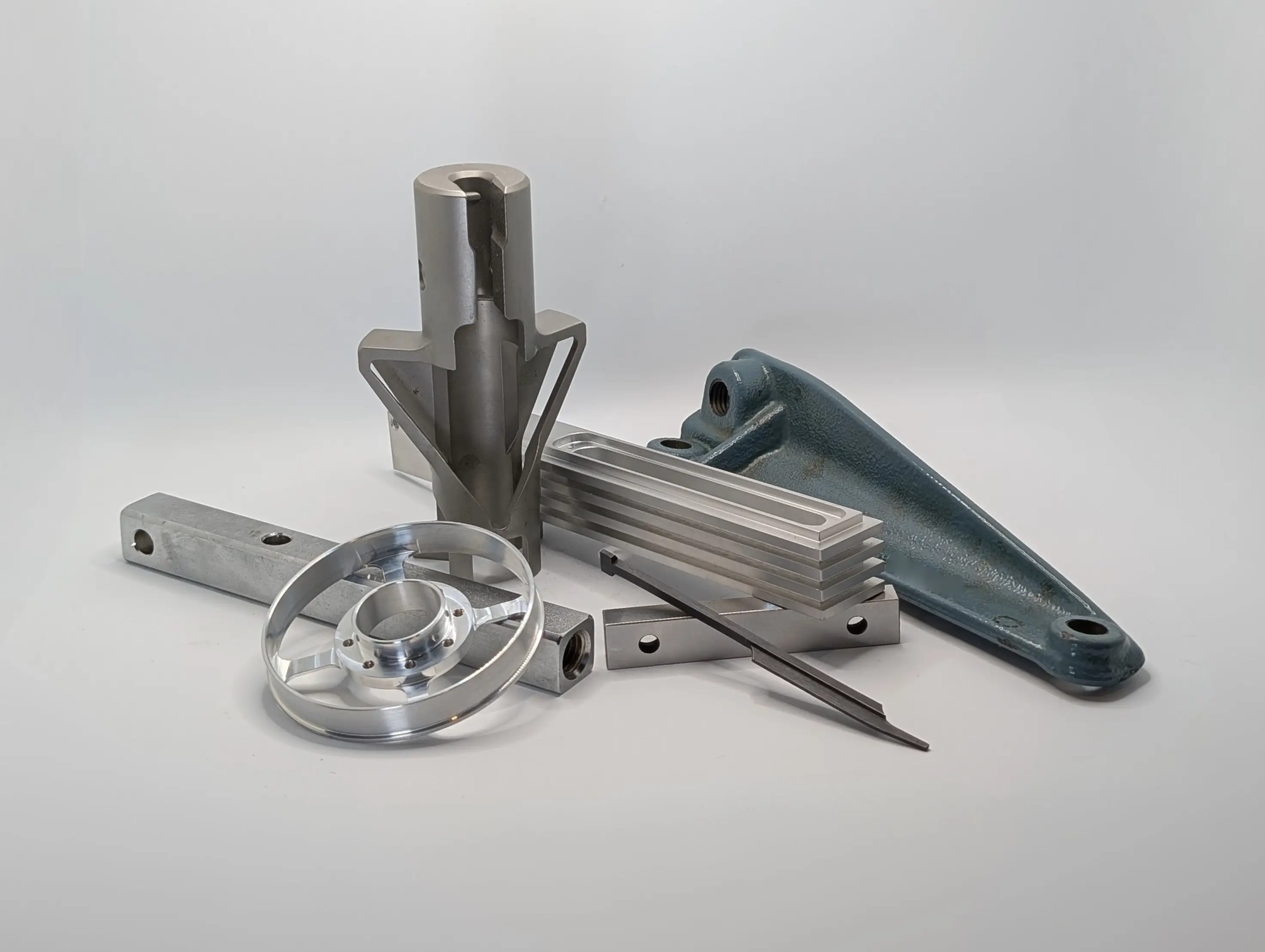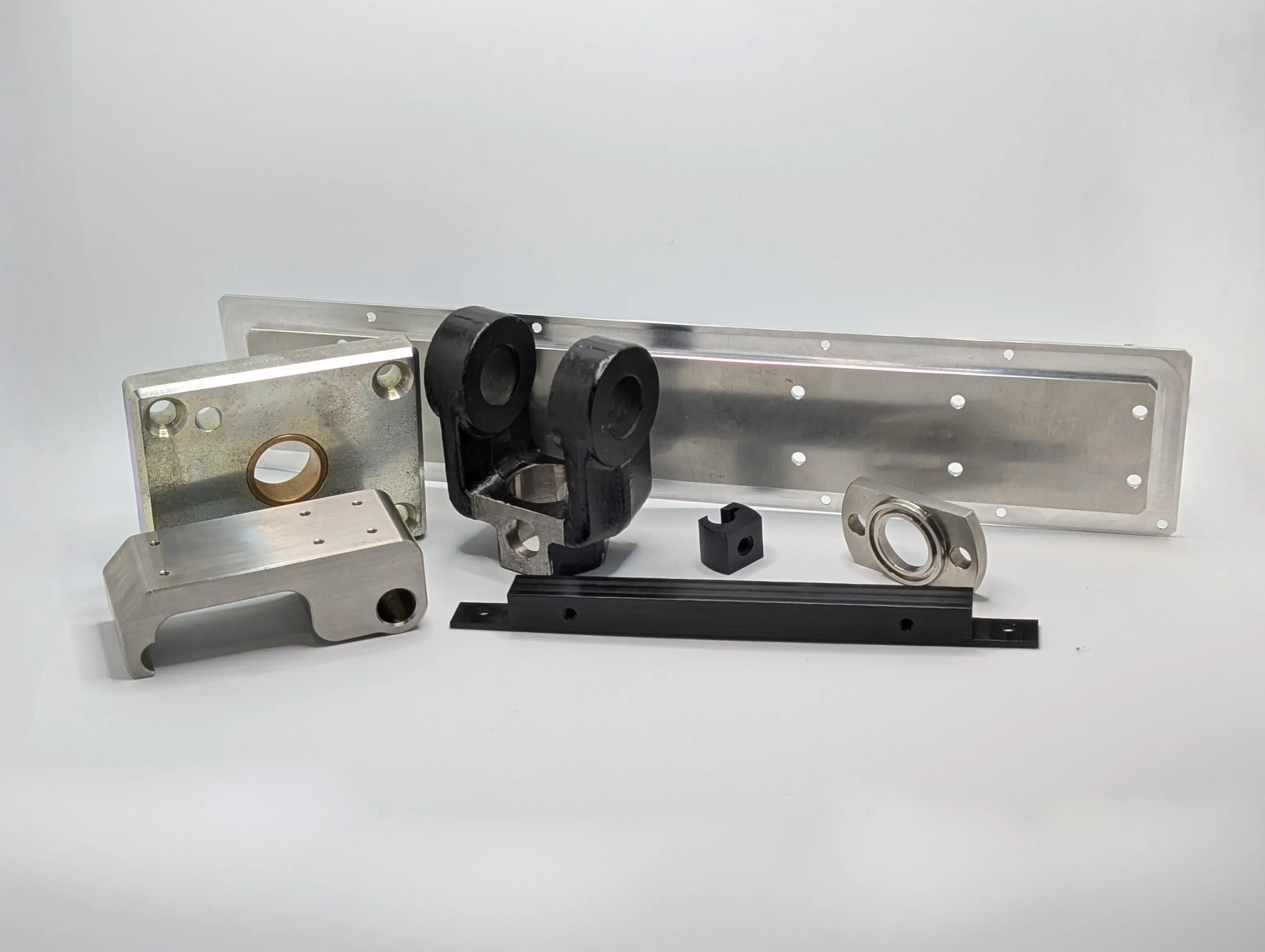CNC Milling
Multi-axis CNC milling for complex geometries and precision parts. Our advanced mills and skilled machinists deliver tight tolerances, fast turnaround, and consistent quality for prototypes and production runs.
What is CNC Milling?
Process Overview
CNC milling is a subtractive manufacturing process that uses computer-controlled cutting tools to remove material from a workpiece. The cutting tool rotates at high speeds while the workpiece is moved in multiple axes to create precise shapes, holes, and surface features.
When to Choose CNC Milling
- Complex 3D geometries and contours
- Parts with multiple flat surfaces and features
- Components requiring pockets, slots, or cavities
- Prototypes and one-off custom parts
Key Advantages
- High precision and repeatability
- Ability to machine complex geometries
- Ablility to machine large workpieces
- Cost-effective for low to medium volumes
Machine Capabilities
Ideal Applications
Complex Geometries
- • Brackets and mounting plates
- • Housings and enclosures
- • Custom fixtures and tooling
- • Manifolds and valves
Precision Features
- • Pockets and cavities
- • Flat and parallel faces
- • Ports, bolt patterns and dowel holes
- • Contoured 3D surfaces
Production Parts
- • High-volume components
- • Consistent quality
- • Fast turnaround
- • Cost-effective until reaching casting or molding volumes
Design Considerations
Important Limitations
Internal Corners
Corners in pockets need to be rounded at least as large as the smallest tool radius. Round tools can't cut square corners. Drilling out the corners is a common workaround if you need sharp cornered mating part to fit with a tightly on all sides.
Deep Pockets
Tool availability and chatter limit deep pockets. Aim for a depth <6x the smallest required tool diameter. May require 5 axis machining for good results.
Undercuts
May require special tooling or 5-axis machining. Consider the off the shelf slitting saw, lollipop, and woodruff cutter tool sizes when designing the parts.
Workholding considerations
Adding features for workholding, such as flats for clampining in a vise or bolt holes to clamp from the bottom, will lead to more successful production. Poor workholding is a leading contributor to chatter.
Need help with design optimization? Our engineers can suggest modifications to improve manufacturability and reduce costs. Contact us for design consultation.
Sample Milled Parts


Milling-Specific FAQ
For general questions about quoting, file formats, and lead times, see our FAQ page.
Ready to Get Started?
Upload your CAD files and get an instant quote for your CNC milling project. Our automated system provides pricing in minutes for most parts.
